Undoubtedly, Excel is the go-to tool for transforming and analyzing data. Now, what if you need to extract metadata from images and export them to Excel? Granted this, in this tutorial, we’ll go through the steps to export image metadata to Excel. In addition, we’ll also learn to export file metadata to Excel.
How to Export Image Metadata to Excel: 4 Easy Steps
First and foremost, let’s start with a quick explanation, so you don’t have to spend all day on this. In a nutshell, the term metadata refers to information about other data instead of the actual content of the data.
In this case, the screenshot below is an overview of this article, which represents how to export file or image metadata to Excel. So, let’s explore the steps in detail and with appropriate illustrations.
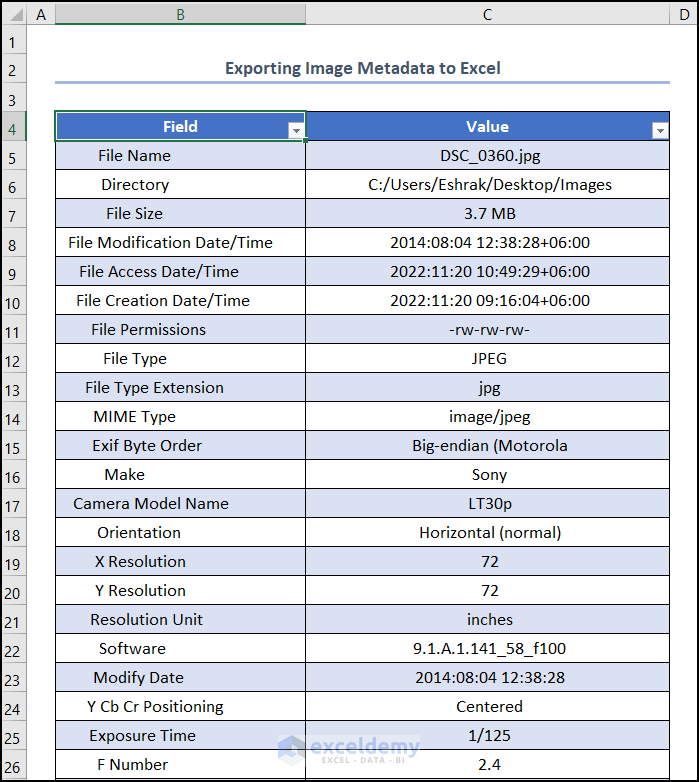
Here, we have used the Microsoft Excel 365 version; you may use any other version according to your convenience.
📌 Step 01: Download the ExifTool
- First, open a browser >> go to this URL to download the Exiftool for Microsoft Windows.
- Next, extract the zip file to the “ExifTool-12.50” folder >> move to this folder.
- Then, double-click or use the F2 key to rename the file name to “exiftool.exe” >> press the CTRL + C keys to copy the “exiftool.exe” file.
- Afterward, navigate to the Windows C drive >> make a directory named “ExifTool”.
- Finally, use the CTRL + V keys to paste the “exiftool.exe” file into this folder in the Windows C drive.
📌 Step 02: Set the Environment Variable
- Second, click the Search icon >> jump to the Edit the system environment variables option.
- In turn, proceed to the Advanced tab >> click on Environment Variables.
- Now, select the Path option >> press the Edit button.
- Following this, press the New button >> enter the path of the “exiftool.exe”, here, it is “C:\exiftool” >> hit OK.
📃 Note: Please make sure to provide the correct path name by copying it from the title bar.
📌 Step 03: Extract Metadata
- Third, use the WINDOWS + R keys >> type in “cmd” to open the Command Terminal.
- Now, enter the following command and press ENTER.
cd C:\exiftool- Then, provide the command below to navigate to the folder containing the images.
exiftool C:\Users\Eshrak\Desktop\Images- Not long after, the ExifTool extracts the metadata from the images >> type in the following command to write the metadata into the “output.csv” file.
exiftool C:\Users\Eshrak\Desktop\Images > C:\Users\Eshrak\Desktop\Images\ouput.csv📌 Step 04: Transform and Export Metadata to Excel
- Fourth, launch Excel >> go to Data tab >> choose the From Text/CSV option.
- At this time, select the “output.csv” file >> click Import.
- In turn, this displays a preview of the CSV file >> press Transform Data.
- Not long after, hold the CTRL key and select “Columns 2,3, and 4” >> hit the Remove Columns button.
- In a similar manner, select the first row >> move to the Remove Rows drop-down >> press Remove Top Rows.
- Afterward, go to the Split Column drop-down >> choose the By Delimiter option.
- Now, check the Left-most delimiter option >> hit OK.
In this case, the animated GIF shows the steps in real time.
- Lastly, select the Close & Load drop-down >> press the Close & Load option.
Subsequently, the completes the export of the image metadata to Excel as shown in the screenshot below.
Read More: How to Create Excel File from Metadata with CSV File
How to Export File Metadata to Excel
For one thing, we can also export File metadata to Excel, since the ExifTool only imports image metadata, so we’ll have to utilize a different tool. Hence, let’s see the process in action.
📌 Steps:
- In the first place, go to this website to download the Jam FileList software.
- Then, extract the zip file >> copy and paste the “File List.exe” file to the folder containing the files.
- At this point, click the Title Bar >> type in “cmd” to jump to the Command Line Interface.
- Later, copy and paste the command given below >> press ENTER.
FileList.exe /USECOLUMNSNAME,FULLPATH,LASTCHANGE,EXTENSION,SIZE, AUTHORS,System.Photo.DateTaken > output.txt- Following this, open Microsoft Excel >> proceed to the Data tab >> select the From Text/CSV option.
- Next, click on the “output.txt” file >> hit Import.
- Now, this shows a preview of the “output.txt” file >> select the Transform Data option.
- Likewise, follow the steps shown in the GIF below.
- Afterward, select the Close & Load option.
Consequently, this exports the file metadata into Excel.
Download Practice Workbook
Conclusion
In short, this tutorial explores all the ins and outs of how to export image metadata to Excel. Now, we hope all the methods mentioned above will prompt you to apply them in your Excel spreadsheets more effectively. Furthermore, if you have any questions or feedback, please let me know in the comment section.
Related Articles
- How to Make an Excel Metadata Extractor
- How to Remove Metadata from Excel File
- How to Display Document Properties in Excel
- How to View Properties Dialog Box in Excel
- How to Remove Excel Metadata
- How to Show Excel Metadata Viewer
- How to Create Metadata in Excel
- How to Edit Document Properties in Excel
- How to Remove Last Modified By in Excel
<< Go Back to Excel Metadata | Workbook in Excel | Learn Excel
Get FREE Advanced Excel Exercises with Solutions!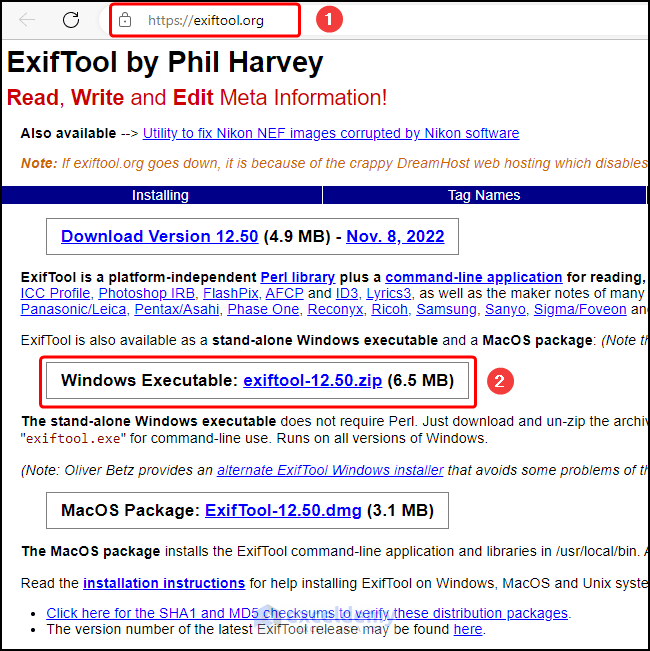
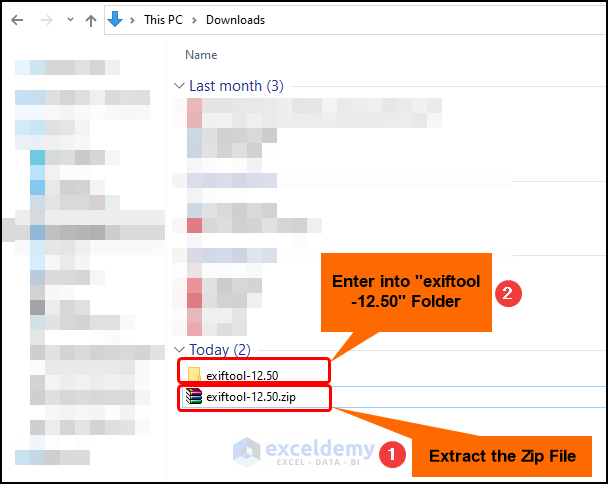
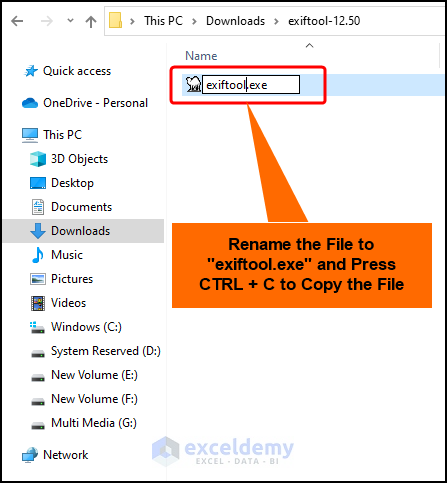
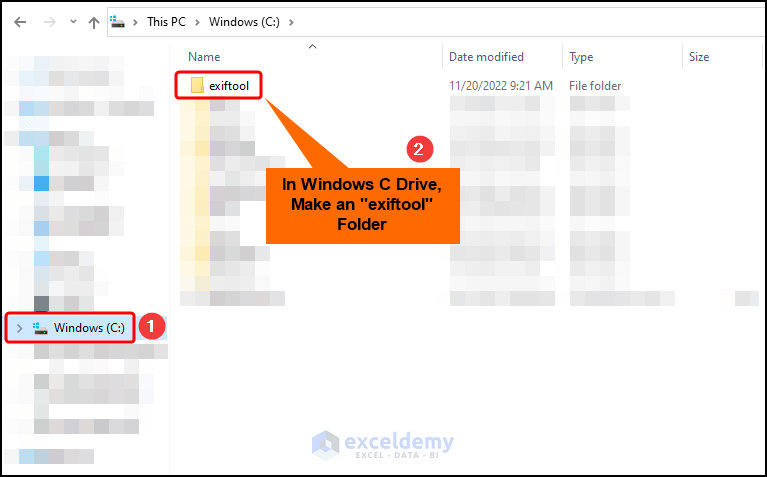
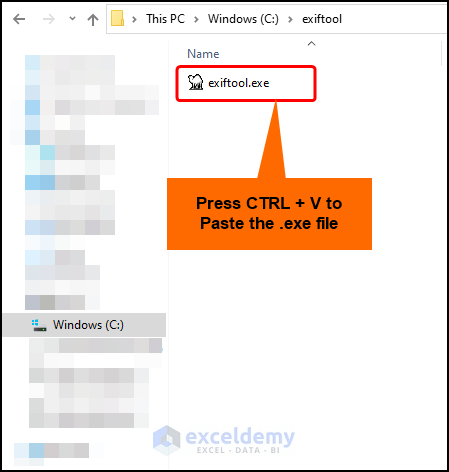
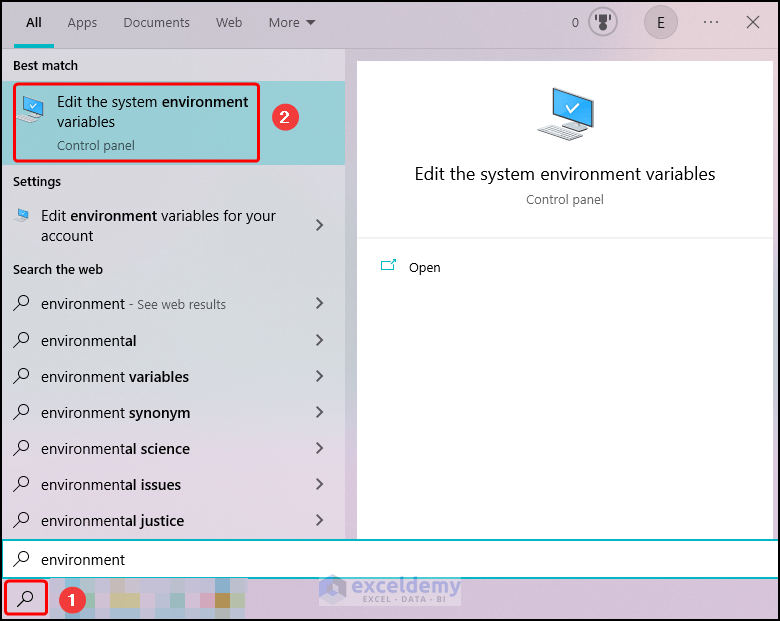
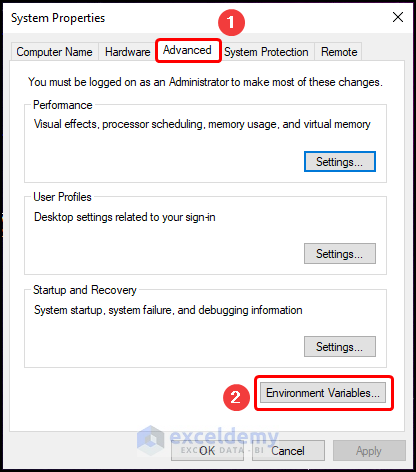
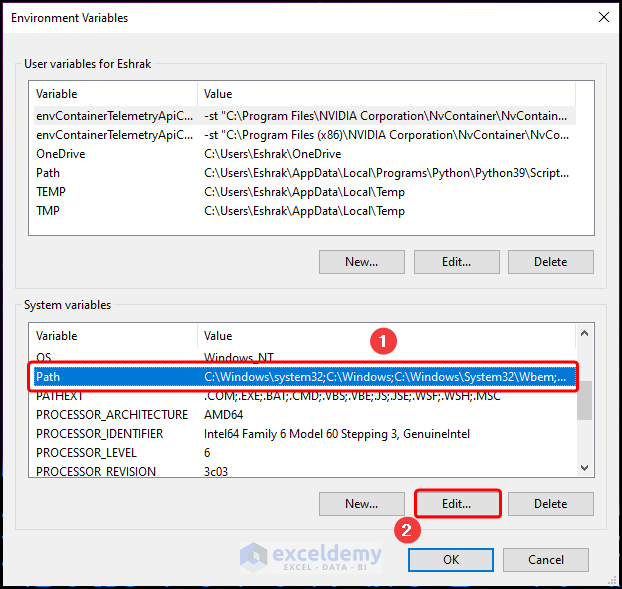
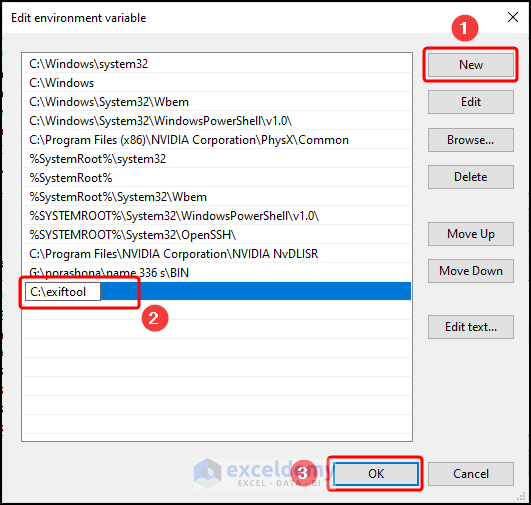
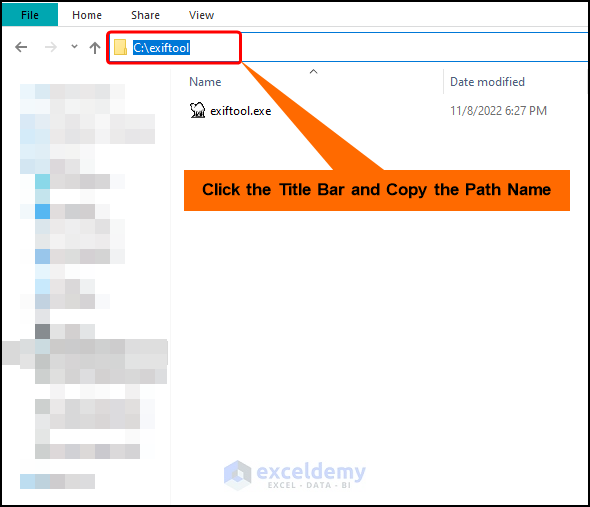
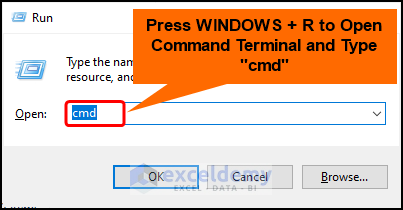
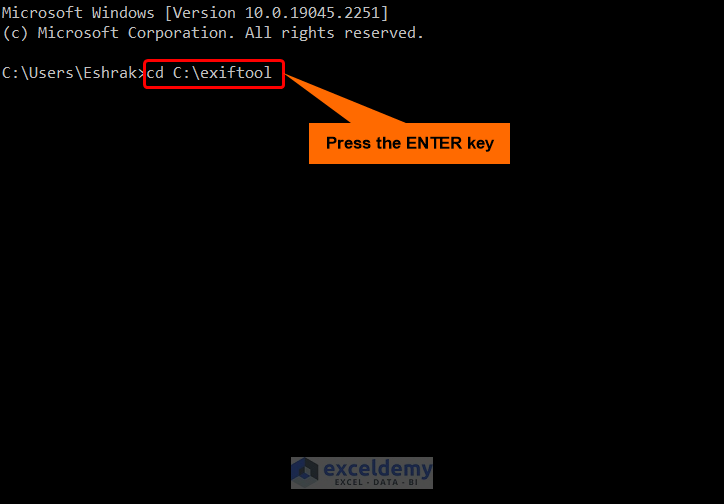
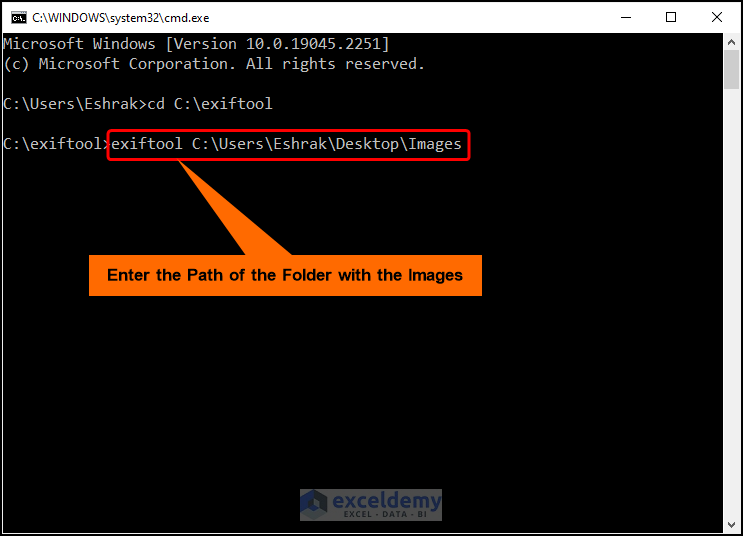
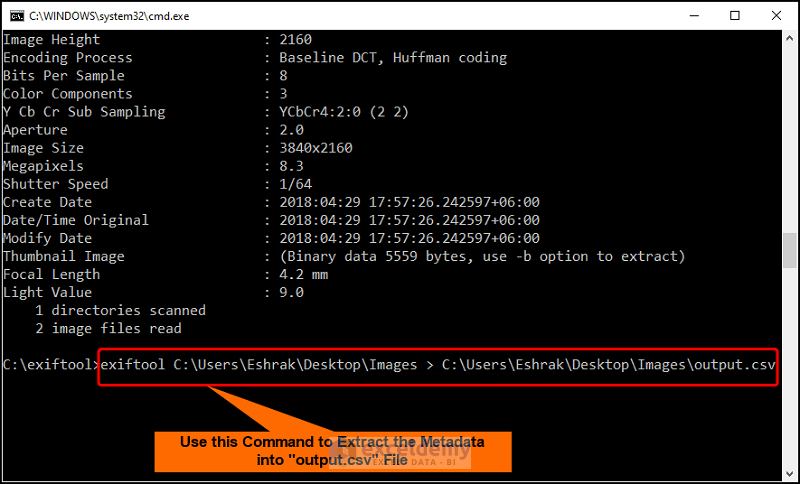
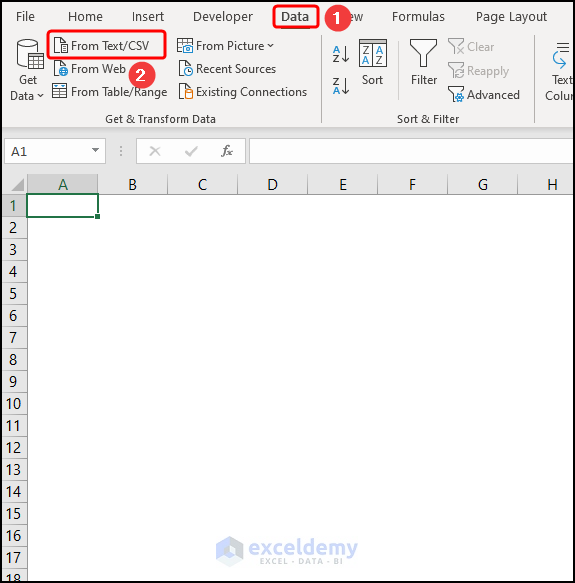
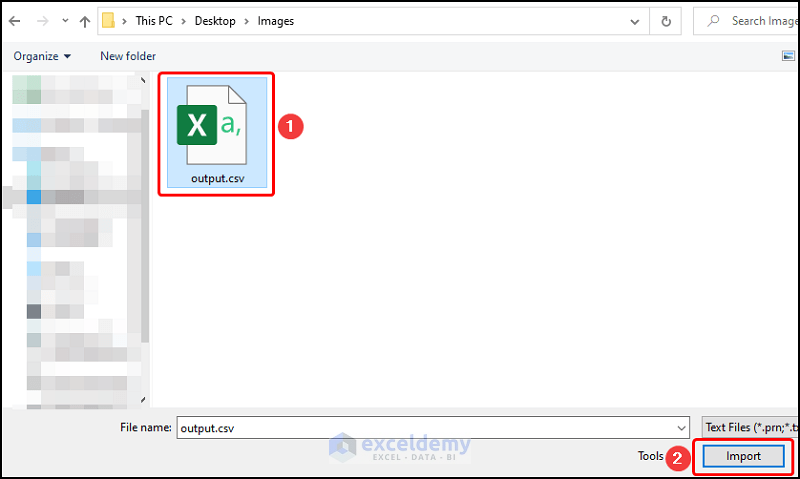
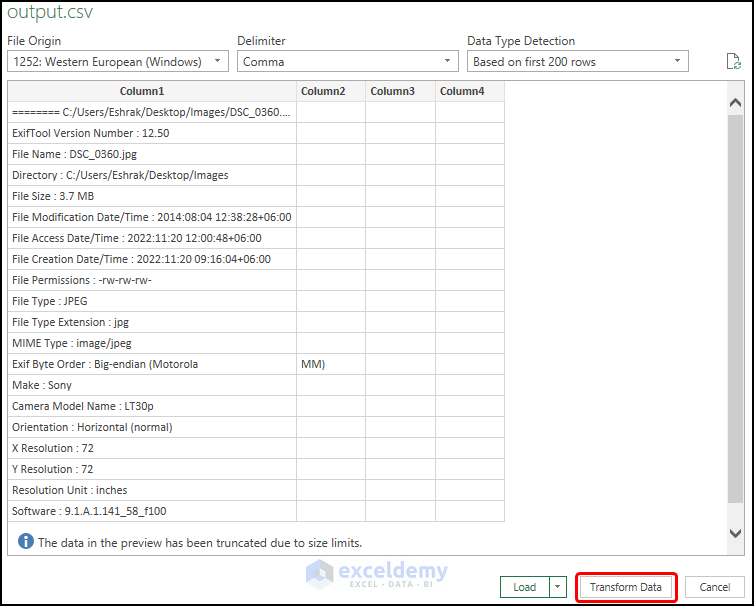
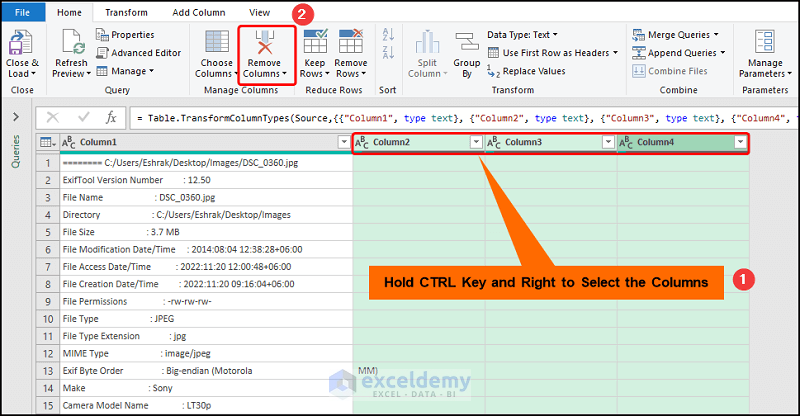
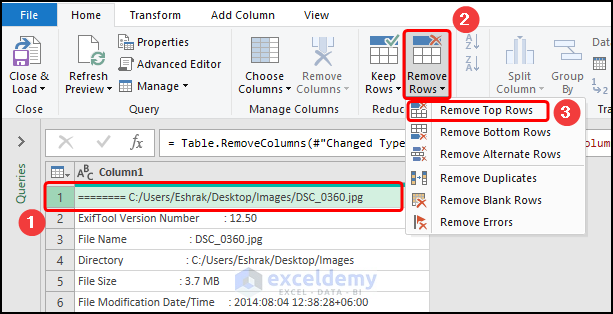
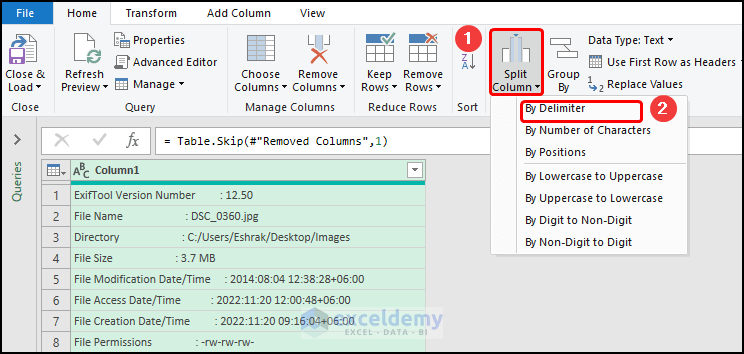
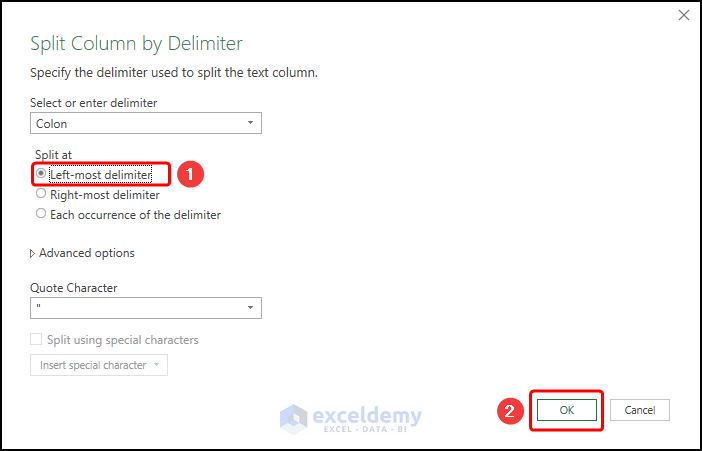
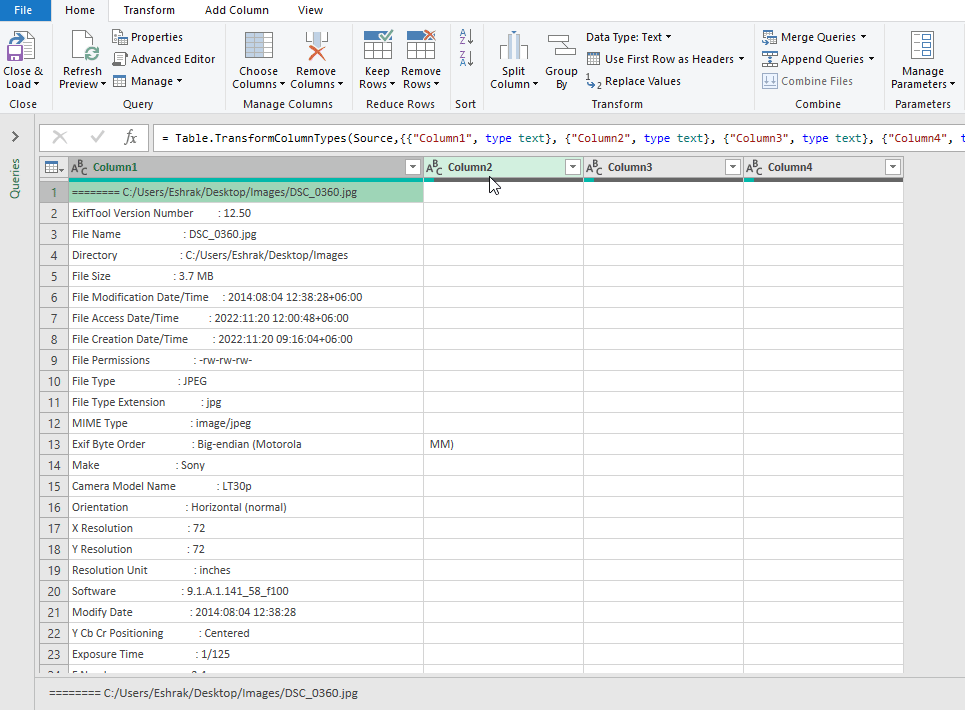
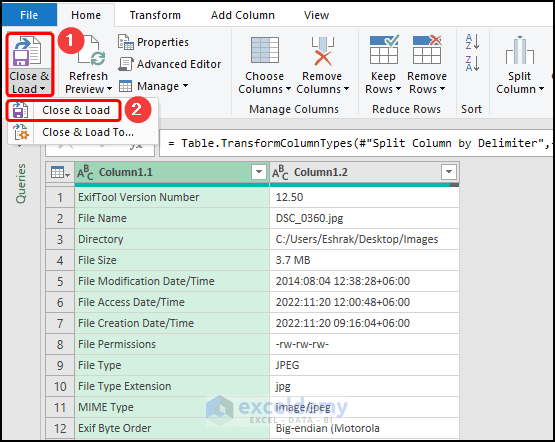
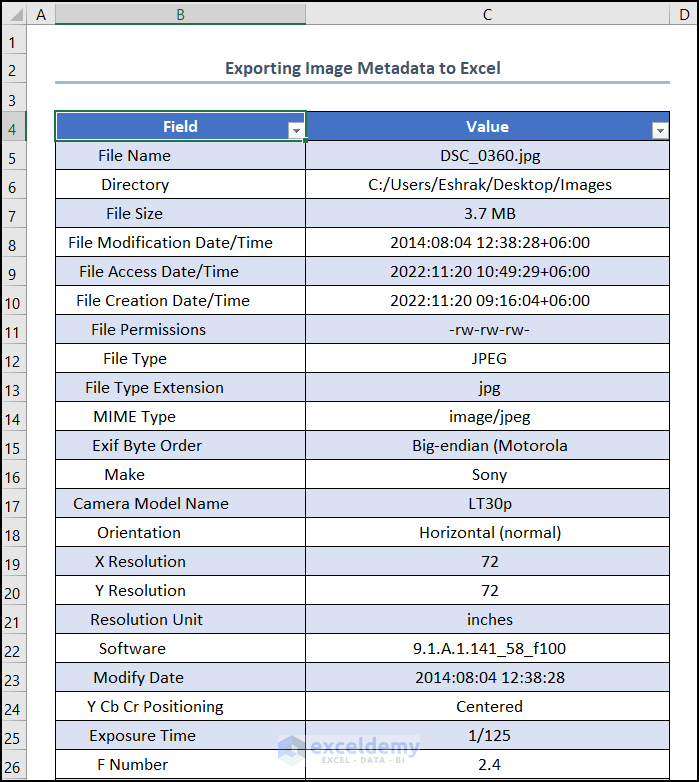

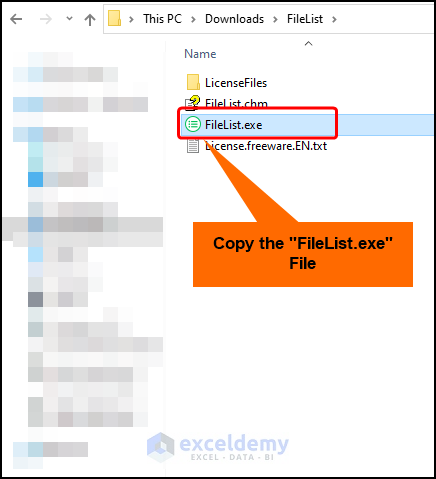


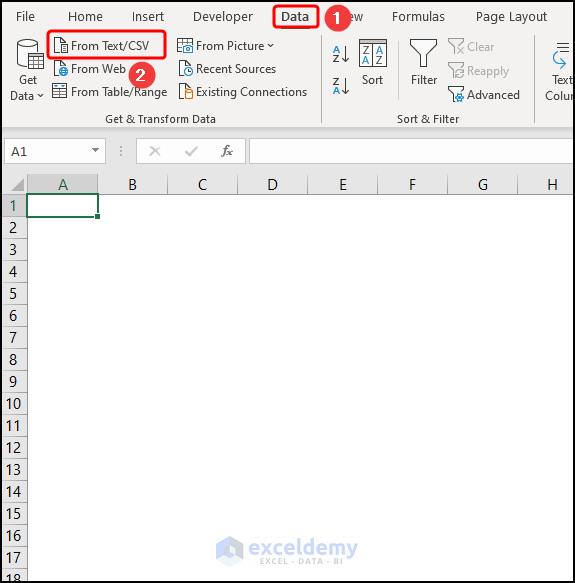
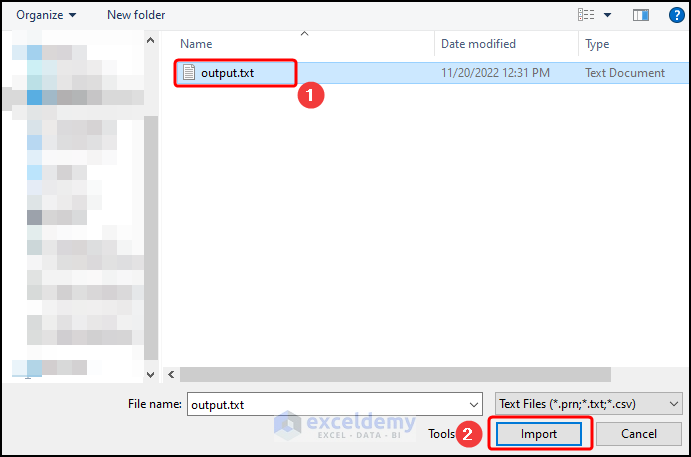
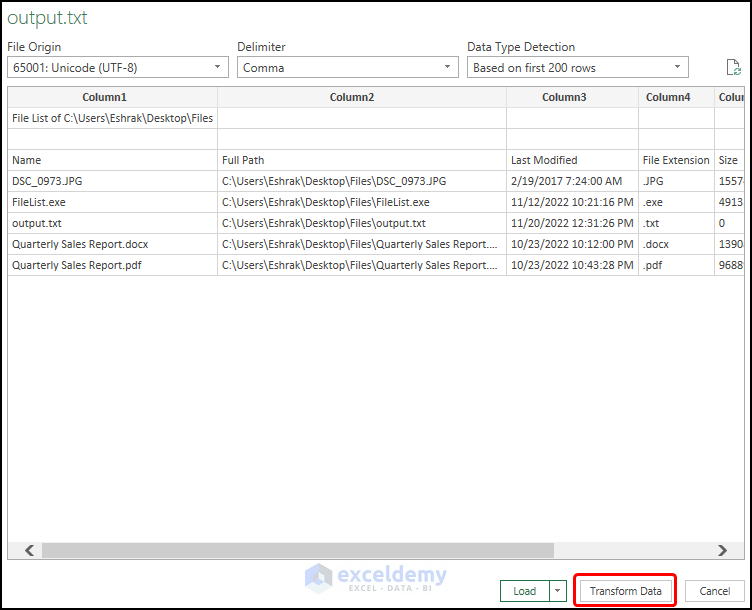
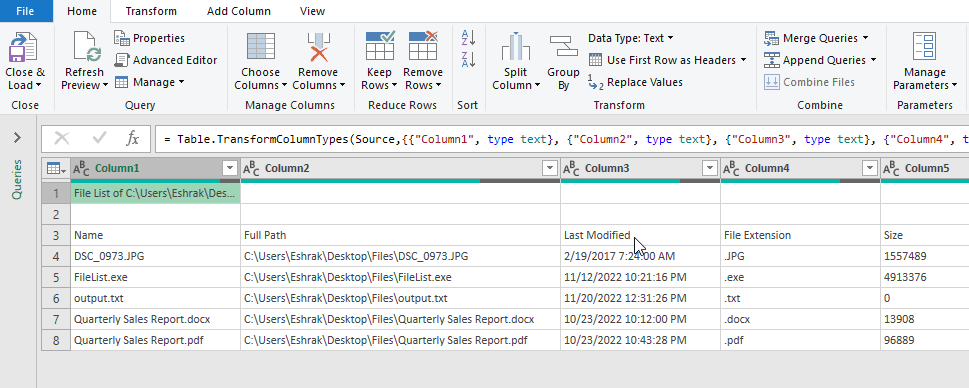
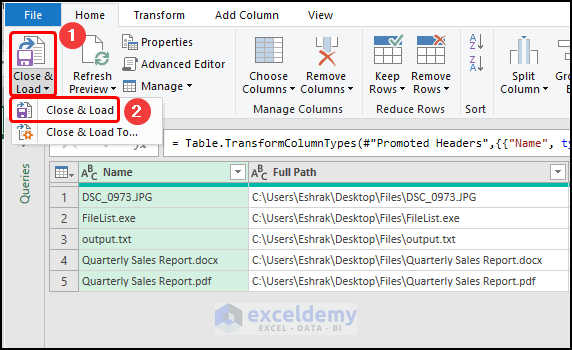
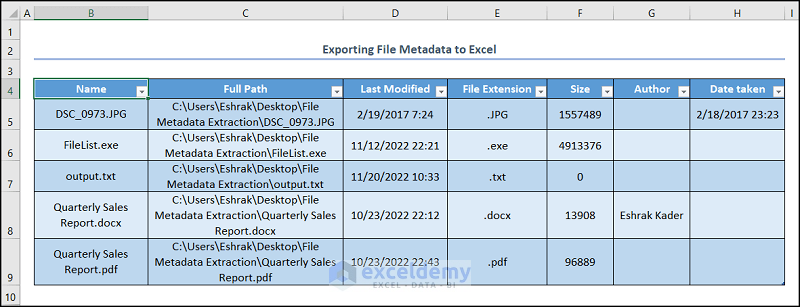



Clear and concise instructions. In step 3 for the exiftool how do I get it to run on all the subfolders of the specified source folder? I am just to lazy to write a new path for each folder so I wrote a small batch file for your process but can only get it to run on the specified directory…not any subfolders…
Hey ERIK NIELSEN,










Thanks for your comment. I am replying to you on behalf of ExcelDemy. If you want to get metadata from subfolders of the specified source folder then you can use the jamsoftware that is used in the “How to Export File Metadata to Excel” section of this article. Let’s see the steps.
• Firstly, download and then copy and paste the FileList.exe file to the folder from where you want to get the metadata by following the steps from the “How to Export File Metadata to Excel” section of this article.
• Secondly, press Windows Key + R.
• Thirdly, write cmd in the Open section.
• Then, select OK.
• After that, write
cd C:\Images. Here,C:\Imagesis the source folder path.• Then, press Enter.
• Next, write the command below.
FileList.exe /USECOLUMNSNAME,FULLPATH,LASTCHANGE,EXTENSION,SIZE, AUTHORS,System.Photo.DateTaken > output.txt• Then, press Enter.
• After that, minimize the window.
• Now, you will see a txt file is created in your selected location. It contains the metadata from all the subfolders.
• Next, open an Excel file >> go to Data tab >> select From Text/CSV.
• Afterward, select the txt file >> select Import.
• Now, you will see the metadata are imported to a table.
• Then, select Comma as Delimiter >> select Load.
• Finally, you will see all the metadata from the subfolders is loaded to an Excel sheet.
I hope this will help you to solve your problem. Please let me know if you have other queries.
Regards
Mashhura,
ExcelDemy.